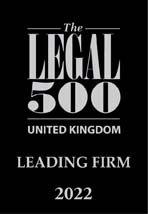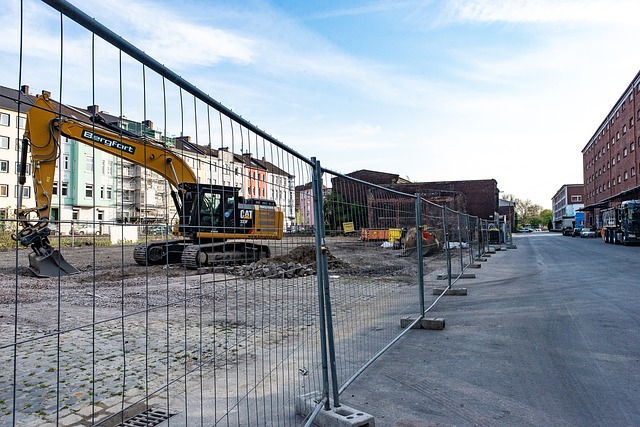Sustainable construction is becoming increasingly important as the world faces environmental challenges. Green building certification is a key aspect of this movement, providing a framework for designing, constructing, and operating buildings that are environmentally responsible and resource-efficient. Understanding the process of obtaining green building certification can help construction companies enhance their sustainability practices and meet regulatory requirements. At Blackstone Solicitors, we offer comprehensive legal services across England and Wales, and we are here to guide you through the complexities of green building certification.
Free Initial Telephone Discussion
For a free initial discussion with a member of our New Enquiries Team, get in touch with us today. We are experienced in dealing with all the aspects of construction law, and once instructed, we will review your situation and discuss the options open to you in a clear and approachable manner. Early expert legal assistance can help ensure you are on the best possible footing from the start and also avoid the stress of dealing with these issues on your own. Simply call us on 0345 901 0445 or click here to make a free enquiry and a member of the team will get back to you.
What is Green Building Certification?
Green building certification is a formal recognition that a building meets certain environmental performance standards. These standards cover various aspects of sustainability, including energy efficiency, water conservation, materials selection, and indoor environmental quality. Certification schemes provide a structured approach to achieving and demonstrating sustainability goals.
Key Green Building Certification Schemes in the UK
- BREEAM (Building Research Establishment Environmental Assessment Method): BREEAM is one of the most widely used green building certification schemes in the UK. It assesses the environmental performance of buildings across various categories, including energy, water, materials, waste, and health and wellbeing. BREEAM ratings range from Pass to Outstanding, providing a clear indication of a building’s sustainability credentials.
- LEED (Leadership in Energy and Environmental Design): Although originally developed in the United States, LEED is also used in the UK. It provides a framework for creating healthy, highly efficient, and cost-saving green buildings. LEED certification is recognised globally and covers various building types, including new construction, existing buildings, and interiors.
- WELL Building Standard: The WELL Building Standard focuses on the health and wellbeing of building occupants. It assesses factors such as air quality, water quality, lighting, fitness, comfort, and mental health. WELL certification is increasingly popular in the UK, particularly for office buildings and workplaces.
- Passivhaus: Passivhaus is a rigorous standard for energy efficiency in buildings, aiming to reduce the building’s ecological footprint. It focuses on high levels of insulation, airtightness, and the use of passive solar design. Passivhaus certification is particularly relevant for residential buildings and is gaining traction in the UK.
The Certification Process
- Pre-Assessment and Planning: The first step in the certification process is to conduct a pre-assessment to understand the project’s potential for achieving certification. This involves reviewing the certification criteria and identifying areas where the project can meet or exceed the standards. Early planning is crucial to integrate sustainability goals into the design and construction process.
- Design and Specification: During the design phase, the project team must incorporate sustainable design principles and select materials and systems that meet the certification criteria. This may involve using energy-efficient HVAC systems, low-emission materials, and water-saving fixtures. Collaboration between architects, engineers, and sustainability consultants is essential to ensure that all aspects of the design align with the certification requirements.
- Construction and Implementation: During construction, it is important to follow best practices for sustainability and ensure that all specified materials and systems are installed correctly. This includes managing waste, minimising site disturbance, and ensuring proper indoor air quality. Regular site inspections and documentation are necessary to track progress and verify compliance with the certification criteria.
- Performance Testing and Verification: Once construction is complete, the building must undergo performance testing and verification to ensure that it meets the certification standards. This may involve energy modelling, air quality testing, and commissioning of building systems. Independent assessors or certifiers will review the documentation and conduct site visits to verify compliance.
- Certification and Post-Occupancy Evaluation: After successful verification, the building can be awarded the green building certification. It is important to maintain and monitor the building’s performance over time to ensure that it continues to meet the sustainability goals. Post-occupancy evaluations can provide valuable feedback for future projects and help identify areas for improvement.
Benefits of Green Building Certification
- Environmental Impact: Green building certification helps reduce the environmental impact of construction projects by promoting energy efficiency, water conservation, and sustainable materials. This contributes to the overall goal of reducing carbon emissions and mitigating climate change.
- Cost Savings: Certified green buildings often have lower operating costs due to reduced energy and water consumption. This can result in significant cost savings over the building’s lifecycle, making it a financially attractive option for developers and owners.
- Health and Wellbeing: Green buildings are designed to provide healthier indoor environments, with better air quality, natural lighting, and thermal comfort. This can enhance the wellbeing and productivity of occupants, making certified buildings more attractive to tenants and buyers.
- Marketability and Value: Green building certification can enhance the marketability and value of a property. Certified buildings are often seen as more desirable and can command higher rents and sale prices. This can provide a competitive advantage in the real estate market.
- Regulatory Compliance: Achieving green building certification can help construction companies comply with increasingly stringent environmental regulations and standards. This can reduce the risk of legal issues and penalties, ensuring smoother project execution.
Conclusion
Green building certification is an important aspect of sustainable construction, providing a framework for designing and operating buildings that are environmentally responsible and resource-efficient. By understanding the certification process and the benefits it offers, construction companies can enhance their sustainability practices and achieve their environmental goals.
How we can help
We have a proven track record of helping clients deal with construction law. We will guide you diligently and ensure all checks are carried out swiftly and efficiently and we firmly believe that with the right solicitors by your side, the entire process will seem more manageable and far less daunting. You can read more about the range of construction law services we offer by clicking here: https://blackstonesolicitorsltd.co.uk/construction-solicitors/
How to Contact Our Construction Solicitors
It is important for you to be well informed about the possible implications of a construction issue. However, expert legal support is crucial in terms of ensuring a positive outcome to your case.
To speak to our Construction solicitors today, simply call us on 0345 901 0445, or click here to make a free enquiry. We are well known across the country and can assist wherever you are based. We also have offices based in Cheshire and London.
Disclaimer: This article provides general information only and does not constitute legal advice on any individual circumstances.



